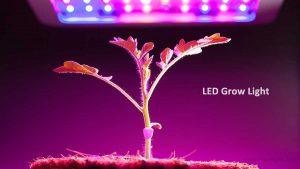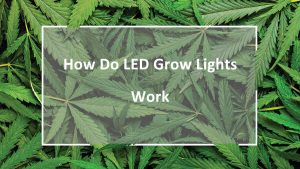Succulents love the Sun, like the ventilation environment, the lack of light will make them form become thin and tall, very ugly. Failure to ventilate can also cause their roots to rot, causing them to wilt and even die.
Therefore, many meaty planters choose to use a grow light to fill in the light.
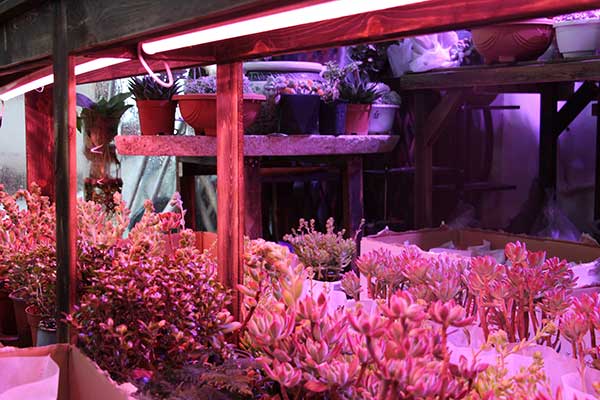
So, how to choose the grow light?
Let’s look at the effects of different wavelengths of light on plants:
280 ~ 315nm: The effect on the morphological and physiological processes is very small;
315 ~ 400nm: less chlorophyll absorption, affect the photoperiod effect, prevent the stem from elongating;
400 ~ 520nm (blue): the ratio of chlorophyll to Carotenoid absorption is the largest, which has the greatest effect on photosynthesis;
520 ~ 610nm (green): The absorption rate of pigment is not high;
610 ~ 720nm (red): Chlorophyll absorption rate is low, which has a significant effect on photosynthesis and photoperiod effect;
720 ~ 1000nm: Low absorptivity, stimulating cell elongation, affecting flowering and seed germination;
> 1000nm: convert to heat.
Many friends on the Internet to buy a variety of so-called plant growth light, after using some said effective, some said no effect at all. What’s really going on? Your light isn’t working, probably bought the wrong one.
The difference between a plant grow light and a normal led light:
The picture is shown the whole spectrum of visible light (sunlight), and you can see that the wavelength that promotes plant growth is mostly red and blue. That’s why the LED plant grow lights use red and blue light beads.
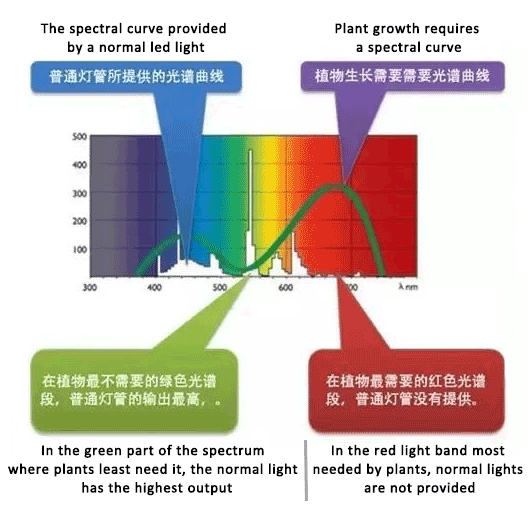
Learn more about the features and functions of LED plant lights:
1. The effects of different wavelengths of light on photosynthesis of plants are different. The wavelengths of light needed for photosynthesis of plants are about 400-700nm. Light at 400-500nm (blue) and 610-720NM (red) contribute the most to photosynthesis.
2. Blue (470nm) and red (630nm) LEDs provide the light for plants needed, so the ideal combination of the two colors is to use. In visual effect, the combination of red and blue plant lights appear pink.
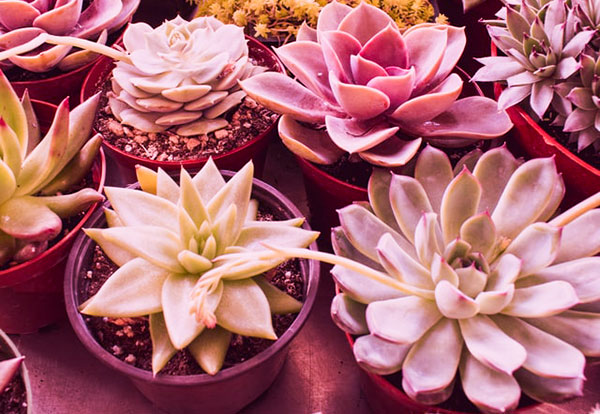
3. Blue Light helps plant photosynthesis can promote green leaf growth, protein synthesis, fruit formation; red light can promote the growth of plant roots and stems, help flowering and fruiting and extend the flowering period, play a role in increasing yield!
4. The red-blue LED ratio of LED plant lamps is usually in the range of 4:1l-9:1, usually 6-9:1.
5. With the plant lamp to plant fill light, the general distance from the height of the leaves about 0.5-1 meters, 12-16 hours a day continuous irradiation can completely replace the Sun.
6. The effect is remarkable, growing nearly three times faster than normal natural plants.
7. Solve the problem of lack of sunlight in rainy days or greenhouses in winter, promote the chlorophyll, Anthocyanin, and carotene that plants need in photosynthesis, make fruits and vegetables harvest 20% earlier, increase the yield by 30% to 50%, it improves the sweetness of fruits and vegetables and reduces pests and diseases.
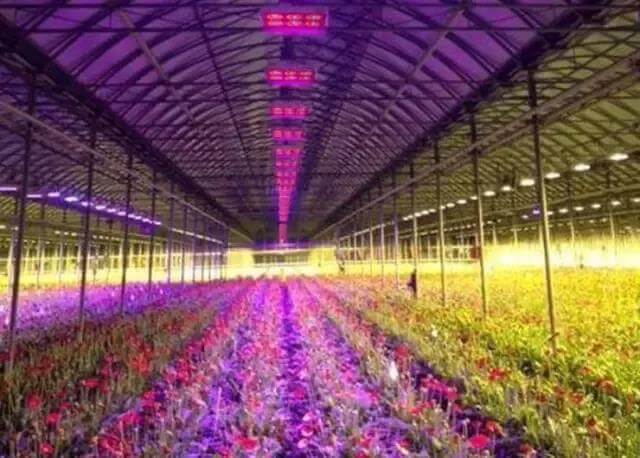
8. LED light source also known as semiconductor light source, this light source wavelength is relatively narrow, can emit light of a specific wavelength, so can control the color of light. It can be used to improve plant varieties by irradiating them individually.
LED plant grow lights are low power, but extremely efficient, because other lights emit a full spectrum of light, meaning seven colors, while plants need only red and blue light, so most of the light energy from conventional lights is wasted, so it’s extremely inefficient. LED plant grow lights are extremely efficient because they emit the red and blue light that plants need, which is why a few watts of LED grow plant light fixtures work better than a few tens or even hundreds of watts.
Another reason is that the spectrum of conventional sodium lamps lacks blue light, and the spectrum of mercury lamps and energy-saving lamps lacks red light, so conventional lamps are much less effective than LED lamps, and save more than 90% of the energy compared to conventional lamps, operating costs are greatly reduced.

